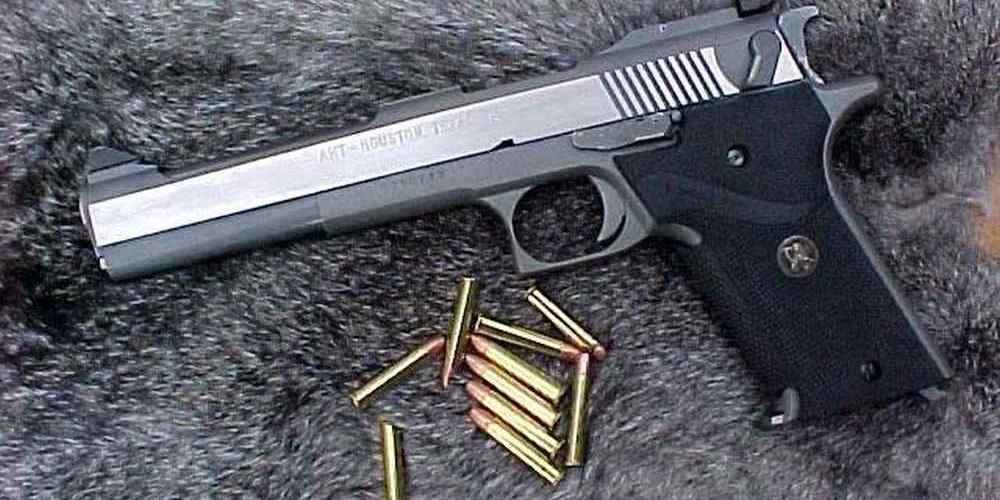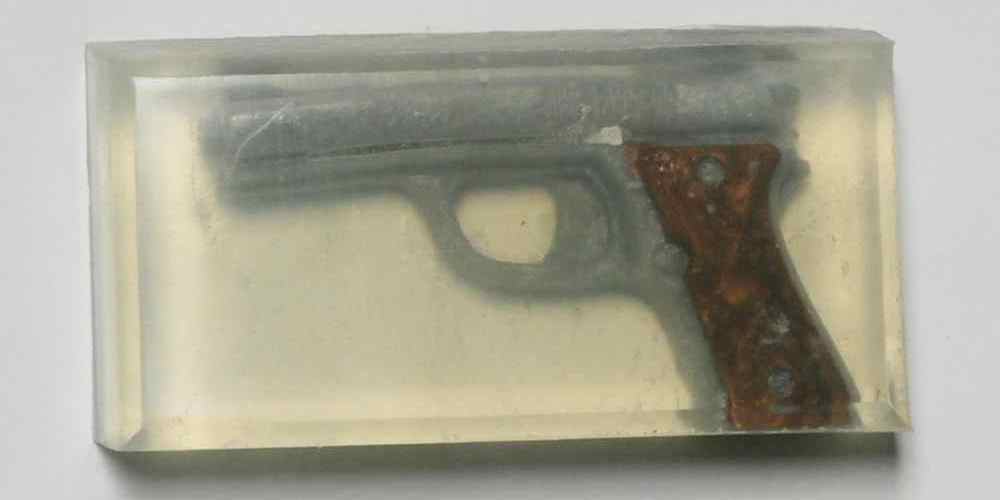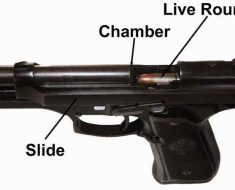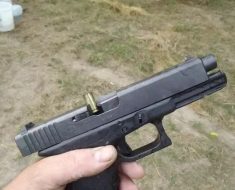“Keep your aim on target with our troubleshooting guide for semi-auto pistol trigger reset issues.”
Common Causes of Trigger Reset Issues in Semi-Auto Pistols
If you own a semi-automatic pistol, you may have encountered trigger reset issues at some point. This can be frustrating and potentially dangerous if not addressed properly. In this article, we will discuss some common causes of trigger reset issues in semi-auto pistols and provide troubleshooting tips to help you resolve them.
One of the most common causes of trigger reset issues is a dirty or fouled trigger mechanism. Over time, dirt, debris, and carbon buildup can accumulate in the trigger assembly, preventing the trigger from resetting properly. To address this issue, you should disassemble the trigger mechanism and clean it thoroughly with a solvent and a brush. Be sure to lubricate the moving parts with a high-quality gun oil to ensure smooth operation.
Another common cause of trigger reset issues is worn or damaged trigger components. If the trigger bar, sear, or other parts of the trigger mechanism are worn or damaged, they may not engage properly, causing the trigger to fail to reset. In this case, you may need to replace the worn or damaged parts with new ones to restore proper function.
Improper trigger adjustment can also lead to trigger reset issues in semi-auto pistols. If the trigger pull weight is set too light or too heavy, it can affect the trigger reset and cause malfunctions. Make sure to follow the manufacturer’s guidelines for adjusting the trigger pull weight and reset to ensure proper function.
Weak or worn trigger return springs can also cause trigger reset issues in semi-auto pistols. If the trigger return spring is weak or worn out, it may not have enough tension to reset the trigger properly. In this case, you should replace the trigger return spring with a new one to restore proper function.
In some cases, trigger reset issues may be caused by a misaligned or improperly installed trigger assembly. If the trigger components are not aligned correctly or if they are not installed properly, it can affect the trigger reset and cause malfunctions. Make sure to carefully follow the manufacturer’s instructions for installing the trigger assembly to ensure proper function.
Lastly, ammunition can also play a role in trigger reset issues in semi-auto pistols. Using low-quality or improperly sized ammunition can cause feeding and ejection issues, which can affect the trigger reset. Make sure to use high-quality, factory-made ammunition that is the correct caliber and size for your pistol to prevent malfunctions.
In conclusion, trigger reset issues in semi-auto pistols can be caused by a variety of factors, including dirty trigger mechanisms, worn or damaged trigger components, improper trigger adjustment, weak trigger return springs, misaligned trigger assemblies, and improper ammunition. By identifying the root cause of the issue and following the troubleshooting tips provided in this article, you can resolve trigger reset issues and ensure the reliable operation of your semi-auto pistol. Remember to always practice proper gun safety and maintenance to prevent malfunctions and accidents.

How to Diagnose Trigger Reset Problems in Your Pistol
If you own a semi-automatic pistol, you know how important it is for the trigger to reset properly after each shot. A smooth and consistent trigger reset is crucial for accuracy and follow-up shots. However, sometimes issues can arise that prevent the trigger from resetting correctly. In this article, we will discuss how to diagnose and troubleshoot trigger reset problems in your pistol.
One common issue that can cause trigger reset problems is a dirty or fouled trigger mechanism. Over time, dirt, debris, and carbon buildup can accumulate in the trigger assembly, preventing the trigger from resetting smoothly. To address this issue, you will need to disassemble the pistol and thoroughly clean the trigger mechanism. Use a solvent and a brush to remove any buildup, and then lubricate the moving parts with a light gun oil. Reassemble the pistol and test the trigger reset to see if the issue has been resolved.
Another potential cause of trigger reset problems is worn or damaged trigger components. If the trigger bar, sear, or other parts of the trigger mechanism are worn or damaged, they may not engage properly, preventing the trigger from resetting correctly. In this case, you will need to replace the damaged parts with new ones. Most manufacturers offer replacement trigger components that are easy to install with basic tools. Once you have replaced the worn parts, test the trigger reset to ensure that the issue has been resolved.
Sometimes, trigger reset problems can be caused by an improperly adjusted trigger. If the trigger pull weight is set too light or too heavy, it can affect the reset and cause issues. Check the manufacturer’s specifications for the correct trigger pull weight for your pistol, and adjust the trigger accordingly. Most pistols have adjustable trigger mechanisms that allow you to fine-tune the pull weight to your liking. Once you have adjusted the trigger, test the reset to see if the issue has been resolved.
In some cases, trigger reset problems can be caused by a weak or broken trigger return spring. The trigger return spring is responsible for pushing the trigger back into position after each shot. If the spring is weak or broken, it may not have enough force to reset the trigger properly. To diagnose this issue, remove the trigger assembly from the pistol and inspect the return spring for damage or wear. If the spring is damaged, replace it with a new one from the manufacturer. Once you have replaced the spring, test the trigger reset to see if the issue has been resolved.
If you have tried all of these troubleshooting steps and are still experiencing trigger reset problems, it may be time to take your pistol to a qualified gunsmith for further diagnosis and repair. A gunsmith will have the expertise and tools necessary to diagnose and fix more complex issues with the trigger mechanism. Remember, proper maintenance and regular cleaning are key to preventing trigger reset problems in your pistol. By following these tips and troubleshooting steps, you can keep your pistol in top working condition and ensure a smooth and consistent trigger reset every time you pull the trigger.
Tips for Fixing Trigger Reset Issues on Semi-Auto Pistols
If you own a semi-automatic pistol, you know how important it is for the trigger to reset properly after each shot. A smooth and consistent trigger reset is crucial for accuracy and speed when shooting. However, sometimes you may encounter issues with the trigger reset on your pistol. In this article, we will discuss some common trigger reset issues in semi-auto pistols and provide tips on how to troubleshoot and fix them.
One of the most common trigger reset issues in semi-auto pistols is a gritty or rough feeling when resetting the trigger. This can be caused by dirt, debris, or lack of lubrication in the trigger mechanism. To fix this issue, first, make sure your pistol is unloaded and remove the slide. Then, clean the trigger mechanism with a solvent and a brush to remove any dirt or debris. Once the trigger mechanism is clean, apply a small amount of lubricant to ensure smooth operation.
Another common trigger reset issue is a weak or inconsistent reset. This can be caused by worn or damaged trigger components, such as the trigger spring or sear. To fix this issue, inspect the trigger components for wear or damage and replace any parts that are worn out. Additionally, make sure the trigger spring is properly tensioned and seated in the trigger mechanism. If necessary, adjust the tension on the trigger spring to ensure a strong and consistent reset.
Sometimes, the trigger reset on a semi-auto pistol may feel mushy or spongy. This can be caused by a loose or improperly installed trigger bar or sear. To fix this issue, disassemble the trigger mechanism and check for any loose or improperly installed components. Make sure the trigger bar and sear are properly aligned and seated in the trigger mechanism. If necessary, adjust the position of the trigger bar or sear to ensure a crisp and consistent trigger reset.
In some cases, the trigger reset on a semi-auto pistol may not engage at all, causing the trigger to remain in the rearward position after firing a shot. This can be caused by a broken or worn trigger reset spring or a misaligned trigger bar. To fix this issue, inspect the trigger reset spring for damage and replace it if necessary. Additionally, check the alignment of the trigger bar and make sure it is properly engaged with the sear. If the trigger reset still does not engage, you may need to disassemble the trigger mechanism and check for any other issues that may be preventing the reset from functioning properly.
In conclusion, troubleshooting trigger reset issues in semi-auto pistols can be a frustrating but necessary task for gun owners. By following the tips outlined in this article, you can identify and fix common trigger reset issues to ensure your pistol operates smoothly and reliably. Remember to always practice proper gun safety procedures when working on your firearm and consult a professional gunsmith if you are unsure about how to fix a trigger reset issue. With a little patience and know-how, you can keep your semi-auto pistol in top working condition for years to come.
Understanding the Role of Springs in Trigger Reset Functionality
When it comes to troubleshooting trigger reset issues in semi-auto pistols, understanding the role of springs in trigger reset functionality is crucial. The trigger reset is an essential component of a semi-automatic pistol, as it allows the shooter to quickly fire follow-up shots without having to release the trigger fully. If you are experiencing issues with trigger reset in your pistol, it is likely due to a problem with the springs that control this function.
Springs play a critical role in the operation of a semi-automatic pistol’s trigger reset. There are typically two main springs involved in trigger reset: the trigger return spring and the sear spring. The trigger return spring is responsible for pushing the trigger forward after it has been pulled, while the sear spring is responsible for resetting the sear, which holds the hammer or striker in place until the trigger is pulled.
If you are experiencing trigger reset issues, the first thing to check is the condition of these springs. Over time, springs can become worn out or damaged, which can affect their ability to function properly. If you notice that your trigger feels sluggish or does not reset properly, it may be time to replace these springs.
Another common issue that can affect trigger reset is the presence of debris or fouling in the trigger mechanism. If dirt, grime, or other debris has built up in the trigger assembly, it can prevent the trigger from resetting properly. In this case, a thorough cleaning of the trigger mechanism may be all that is needed to resolve the issue.
In some cases, trigger reset issues may be caused by improper installation or adjustment of the trigger components. If you have recently disassembled your pistol for cleaning or maintenance, it is possible that you did not reassemble the trigger mechanism correctly. Double-checking the installation of the trigger return spring and sear spring can help ensure that they are functioning properly.
If you have checked the springs, cleaned the trigger mechanism, and verified proper installation of the trigger components, but are still experiencing trigger reset issues, it may be time to seek professional help. A gunsmith or firearms expert can help diagnose and repair any underlying issues that may be causing the problem.
In conclusion, understanding the role of springs in trigger reset functionality is essential for troubleshooting trigger reset issues in semi-auto pistols. By checking the condition of the trigger return spring and sear spring, cleaning the trigger mechanism, and ensuring proper installation of the trigger components, you can often resolve trigger reset issues on your own. If these steps do not solve the problem, seeking professional help is recommended to ensure that your pistol is functioning safely and reliably.
Troubleshooting Trigger Reset Issues in Specific Pistol Models
If you own a semi-automatic pistol, you know how important it is for the trigger to reset properly after each shot. A smooth and consistent trigger reset is crucial for accuracy and speed when shooting. However, sometimes issues can arise that prevent the trigger from resetting correctly. In this article, we will discuss common trigger reset issues in specific pistol models and provide troubleshooting tips to help you resolve them.
One of the most common trigger reset issues in semi-auto pistols is a gritty or rough feeling when pulling the trigger. This can be caused by dirt, debris, or lack of lubrication in the trigger mechanism. To address this issue, first, ensure that your pistol is unloaded and follow the manufacturer’s instructions for disassembling the pistol. Once you have access to the trigger mechanism, clean it thoroughly with a solvent and a brush. Be sure to lubricate the trigger components with a high-quality gun oil to ensure smooth operation.
Another trigger reset issue that can occur in semi-auto pistols is a weak or broken trigger return spring. If you notice that the trigger does not reset fully or feels mushy when pulling it, the trigger return spring may be the culprit. To check the trigger return spring, carefully disassemble the pistol and inspect the spring for any signs of wear or damage. If the spring is damaged, replace it with a new one from the manufacturer or a reputable gunsmith.
In some pistol models, the trigger reset can be affected by the magazine disconnect safety feature. This safety feature prevents the trigger from resetting if the magazine is not fully seated in the pistol. If you are experiencing trigger reset issues and suspect that the magazine disconnect safety is the cause, try removing the magazine and reinserting it firmly into the pistol. If the trigger resets properly with the magazine removed, the issue may be with the magazine or the magazine release mechanism.
Another potential trigger reset issue in specific pistol models is a worn or damaged trigger bar or sear. The trigger bar and sear are critical components that work together to reset the trigger after each shot. If these components are worn or damaged, the trigger may not reset properly, leading to issues with accuracy and reliability. To address this issue, carefully inspect the trigger bar and sear for any signs of wear or damage. If necessary, replace these components with new ones from the manufacturer or a qualified gunsmith.
In conclusion, troubleshooting trigger reset issues in specific pistol models requires careful inspection and attention to detail. By following the manufacturer’s instructions and using the proper tools and techniques, you can identify and resolve trigger reset issues in your semi-auto pistol. Remember to always practice proper gun safety and maintenance procedures when working on your pistol to ensure safe and reliable operation. If you are unsure about how to troubleshoot trigger reset issues in your pistol, consult a qualified gunsmith for assistance. With patience and persistence, you can keep your pistol in top condition and enjoy smooth and consistent trigger resets every time you shoot.






